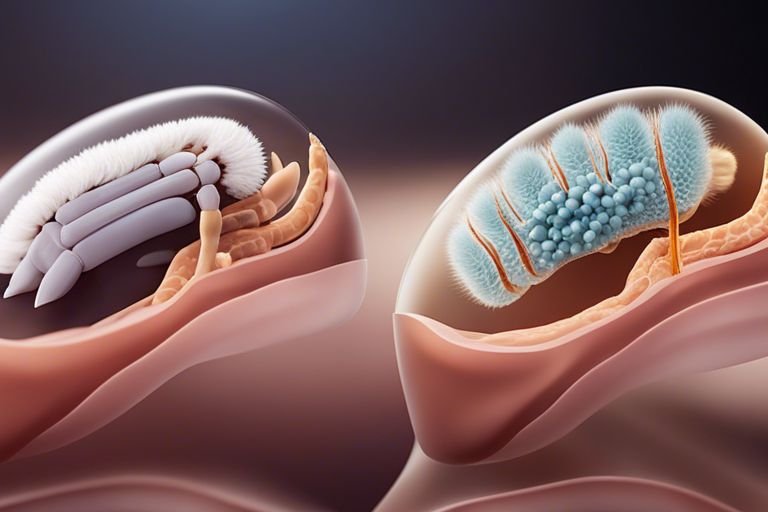When it comes to our body’s composition, nails often raise many questions, one of the most common being – are nails made of hair? To clear up any confusion, it’s crucial to understand the fundamental differences between nails and hair. Nails are composed of a protein called keratin, just like our hair, but with a distinct structure and function. While nails and hair share similarities in composition, nails serve a protective function for our fingertips and toes, while hair mainly functions in temperature regulation and sensation. Understanding the composition of nails is essential for proper nail care and maintenance, as neglecting them can lead to nail problems such as infections or brittleness. By delving into the unique structure of nails, we can better appreciate their importance and how to keep them healthy.
Key Takeaways:
- Nails are not made of hair: Although both nails and hair are made of a protein called keratin, they have different structures and compositions.
- Nail composition: Nails consist of several layers of keratinised cells arranged in a specific pattern, whereas hair is made up of a single strand of keratinised cells.
- Nails serve a protective function: Nails protect the fingertips and toes from injury and provide support for delicate tissues underneath, while hair serves different purposes such as warmth and sensory functions.

Anatomy of the Nail
Nail Structure Overview
The nail is a complex structure composed of multiple layers that serve to protect the fingertips and toes. The main parts of the nail include the nail plate, nail bed, cuticle, nail matrix, and nail root. The nail plate is the visible part of the nail that we commonly refer to as the nail. It is composed of keratin, a protein known for its strength and durability.
Beneath the nail plate lies the nail bed, which is a pinkish colour due to the blood vessels underneath. The cuticle is a thin layer of skin that overlaps the base of the nail plate, protecting the nail matrix. The nail matrix is responsible for producing new cells that push older cells towards the fingertips, allowing the nail to grow continuously. The nail root is where the nail begins its formation under the skin.
Comparison to Hair Structures
While both nails and hair are made of keratin, the structures of the two differ significantly. Nails are hard and compact structures, serving a protective function for the fingertips and toes. On the other hand, hair is a flexible and elongated structure that grows continuously from hair follicles on the scalp.
In comparison to hair structures, nails lack pigment cells and oil glands, making them more susceptible to dryness and brittleness. The lack of blood supply to the nails also means that they are slower to heal from injuries compared to the scalp, where blood flow is abundant.
| Nails | Hair |
| Hard and compact | Flexible and elongated |
| Lack pigment cells and oil glands | Contain pigment cells and oil glands |
| Grow continuously from the nail matrix | Grow continuously from hair follicles |

Composition of Keratin
Keratin is a tough and fibrous protein that forms the basic structural component of hair, nails, and the outer layer of skin. It is a crucial element in maintaining the strength and integrity of these tissues. Understanding the composition of keratin plays a significant role in comprehending the unique characteristics of nails and hair.
Keratin in Nails
Nails are primarily composed of keratin, a sturdy protein that provides strength and protection to the fingertips. The keratin in nails is arranged in long filaments, forming a dense network that gives nails their hard and durable nature. This composition allows nails to withstand daily activities and protect the sensitive nail bed underneath.
Additionally, keratin in nails also helps in maintaining moisture balance and preventing the nails from becoming brittle or prone to damage. The presence of keratin ensures that nails remain strong and healthy, fulfilling their crucial role in gripping and manipulating objects.
Keratin in Hair
Hair, like nails, is predominantly made up of keratin, a sturdy protein that provides structure and strength to each strand. The keratin in hair is arranged in a unique pattern, contributing to the elasticity and resilience of the hair shaft. This composition allows hair to withstand external factors such as heat, chemicals, and mechanical stress.
Furthermore, keratin in hair also plays a role in pigment formation, giving hair its colour and texture. It is essential for the overall health and appearance of hair, contributing to its shine and vitality.

Biological Processes and Growth
When it comes to understanding nail composition, it’s essential to probe into the biological processes and growth that contribute to the formation of nails. Nails are not made of hair, but they are a crucial part of our body’s structure and serve important functions. If you want to learn more about nails and their significance, you can read this detailed article on What Are Nails Made Of and Why Do We Have Them?.
How Nails Grow
Nails grow from the nail matrix, which is found under the skin at the base of each nail. The nail matrix contains cells that divide and multiply, pushing older cells towards the fingertips, where they harden and form the visible nail. The rate of nail growth can vary depending on factors such as age, health, and genetics. Typically, fingernails grow at a rate of about 3mm per month, while toenails grow at a slower pace.
How Hair Grows
Hair growth begins in the hair follicles located in the skin. The hair follicles undergo a cyclical process of growth, rest, and shedding. Each hair strand goes through three stages of growth: anagen (active growth phase), catagen (transition phase), and telogen (resting phase). The length and thickness of hair are influenced by various factors, including genetics, nutrition, and overall health.
During the anagen phase, the hair follicle is actively dividing and growing, leading to the production of new hair cells. In the catagen phase, the hair stops growing and detaches from the blood supply. Finally, in the telogen phase, the hair rests before eventually shedding to make way for new hair growth.
Factors Affecting Nail and Hair Health
When it comes to understanding the composition of nails and hair, there are various factors that can impact their health. Nutritional influences play a significant role in maintaining the strength and vitality of nails and hair. Deficiencies in essential vitamins and minerals can lead to brittle nails and hair loss. To learn more about the importance of nutrition for nail and hair health, check out Skin, Hair, and Nails (for Teens).
Nutritional Influences
Ensuring that you have a balanced diet rich in protein, biotin, iron, zinc, and vitamin E can promote healthy nail and hair growth. If you are experiencing issues such as brittleness or thinning, it may be worth consulting with a healthcare professional to discuss possible nutritional deficiencies that could be affecting your nails and hair.
Environmental and Lifestyle Impacts
Aside from nutrition, environmental and lifestyle factors can also have a significant impact on the health of your nails and hair. Exposure to harsh chemicals from cleaning products or frequent use of heated styling tools can weaken nails and cause hair damage. Smoking and poor sleep habits can also contribute to brittle nails and hair loss.
It is important to be mindful of these environmental and lifestyle influences and take steps to protect your nails and hair from potential damage. Avoiding excessive heat and chemical exposure, as well as adopting healthy lifestyle habits, can help maintain strong and healthy nails and hair in the long run.
Understanding Nail Composition – Are Nails Made of Hair?
After all is said and done, nails are not made of hair. Nails are made of a protein called keratin, while hair is also made of keratin but in a different form. Understanding the composition of nails is essential for proper nail care and maintenance. By knowing the structure of nails and how they differ from hair, individuals can take better care of their nails and ensure their overall nail health. Note, nails and hair may share similarities in composition, but they are distinct structures with their own unique characteristics and functions.
FAQ
Q: What is the composition of nails?
A: Nails are primarily made of a protein called keratin. They are not made of hair.
Q: How do nails differ from hair?
A: Nails are harder than hair and serve different functions. Nails are made of compacted keratinised cells, while hair is a collection of protein filaments.
Q: Why are nails hard?
A: The hardness of nails is due to the keratin protein they are made of, which provides strength and protection to the fingertips.
Q: Do nails have layers?
A: Yes, nails have several layers. The nail plate, the visible part of the nail, is made up of multiple layers of keratinised cells stacked on top of each other.
Q: What gives nails their pinkish colour?
A: The pinkish colour of nails is due to the blood vessels underneath the nail bed. The transparency of the nail plate allows the pinkish hue to be visible.
Q: How do nails grow?
A: Nails grow from the area known as the nail matrix, located under the skin at the base of the nail. As new cells form, older cells are pushed out, resulting in nail growth.
Q: Are nails a reliable indicator of health?
A: Nails can sometimes provide clues about a person’s overall health. Changes in nail colour, texture, or shape can indicate underlying health issues that may require attention.
